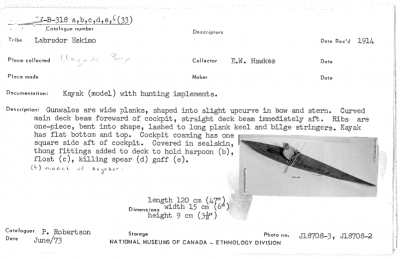Historians on the Job: Dispatches from History Co-Op Students
It was a busy, but rewarding, summer for the fourteen History students who completed co-op work term placements this summer. Carleton’s Co-op program allows students to combine their classroom experiences with paid, hands-on experience in the workplace.
Our students took full advantage of these opportunities. For example, three students were part of the team that handled some of the many research requests from the public submitted to Library and Archives Canada under the Access to Information and Privacy Act. Others put their research and communications skills to use in tasks as varied as researching the history of the Public Health Agency of Canada’s National Emergency Strategic Stockpile (NESS), creating video posts for the International Development Research Centre’s social media team, and investigating the causes of food insecurity for the Nutrition North Canada program.
Regardless of where they worked, students were asked at the end of the term to reflect on the connections between the work they are asked to do in their history classes, and that required of them on the job.
Below, Willem Nesbitt describes his work on a digitization projects undertaken by the Canadian Museum of History (CMH) in an effort to help preserve and share vital historical artifacts.

Q. Can you tell us about the scope of the work you were tasked with as a co-op student at the Canadian Museum of History?
WN: I was given the duty of digitizing the catalogue cards belonging to the ethnographic catalogue records at the Canadian Museum of History. Roughly 55,000 Indigenous objects are housed in the Ethnographic collection at the Museum, and these objects were collected from all ten provinces and three territories between 1879 and the present day. The vast majority of these were purchased by ethnologists conducting research in First Nations, Metis, and Inuit communities between 1889 and 1945.
Between 1966 and 1994, Museum staff recorded a wide array of information about these individual objects on a series of paper index cards. Thousands of cards record descriptions of the objects, the location of purchase, the names of those who did the collecting, and identify the Indigenous peoples who made them.
I was hired to assist with the museum’s efforts to scan these cards and to upload these cards so that researchers from any organisation or community and individuals from Indigenous communities can access them more easily.
Q. This sounds like a large undertaking. Why is it important that this work be done?
WN: Digitizing the catalogue cards of the Ethnographic collection helps preserve the history of Indigenous peoples in Canada. These items, collected from all over Canada, are kept by the Museum and are stored, loaned out, put on display, or repatriated. Digitization will help to preserve information about the object’s origins, the date of collection, or by whom the object was collected. Preserving the cards and the information contained on them will therefore facilitate research related to the CMH’s collections.
At the same time, digitization will help streamline the process of accessing the catalogue cards, and of finding and researching the information they contain and that ought to assist in the potential repatriation of some of the objects to the communities they came from. The Canadian Museum of History and the museum’s Repatriation and Indigenous Relations (RIR) department are continually striving to fulfill their obligations as laid out in agreements, treaties, and policies. For the RIR department this has great importance.
Q. Prior to taking this job, did you have much experience with this sort of work? What have you brought back from this experience to your classes this Fall?
WN: My experience with CMH and RIR will help me greatly in my current courses, as well in my future studies. I now have a greater depth of knowledge regarding Indigenous peoples in Canada and their histories, stories, and relations with Canada as a whole, and this information will help me in courses directly or indirectly related to Indigenous studies. Working at the Museum itself has allowed me to develop my writing and teamwork skills. These experiences cannot be replicated within a classroom or lecture hall.
I believe that becoming familiar with how a museum works beyond the displays and tours has also been incredibly valuable. Learning about a museum’s interconnecting parts, ranging from tour guides, researchers, project managers, conservators, and more, has really opened up a world within museum work that I did not know existed before. It has certainly warmed me up to the idea of working at a museum in the future in any number of those roles. I would greatly enjoy and would love to do once I graduate.